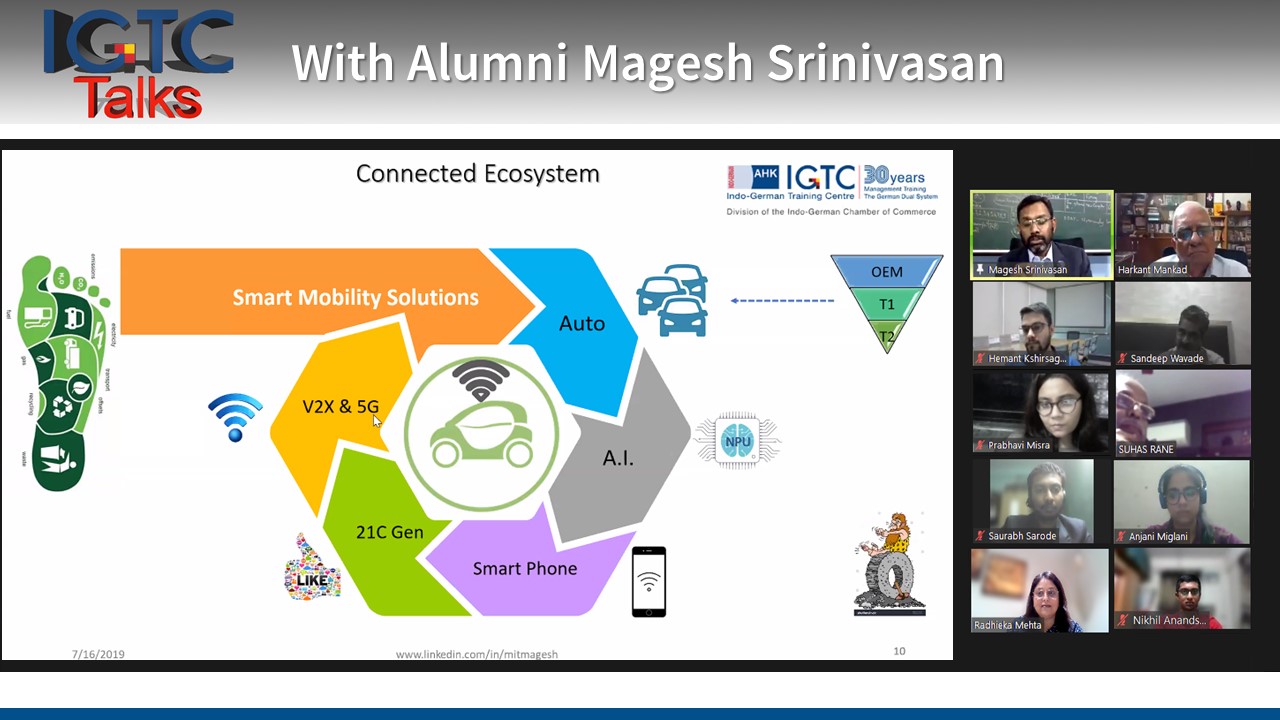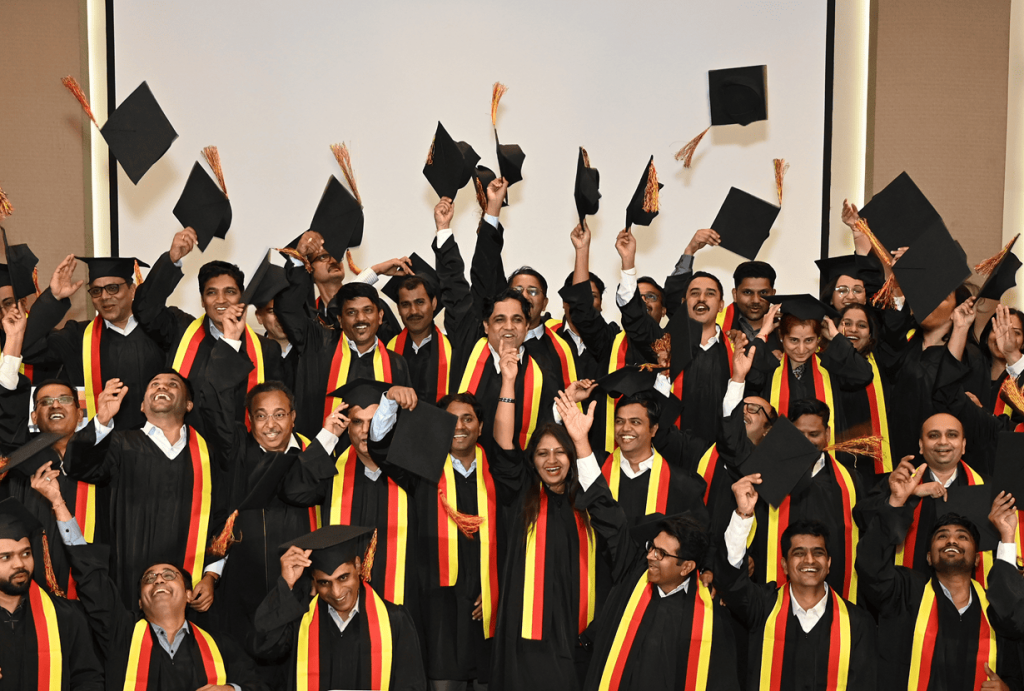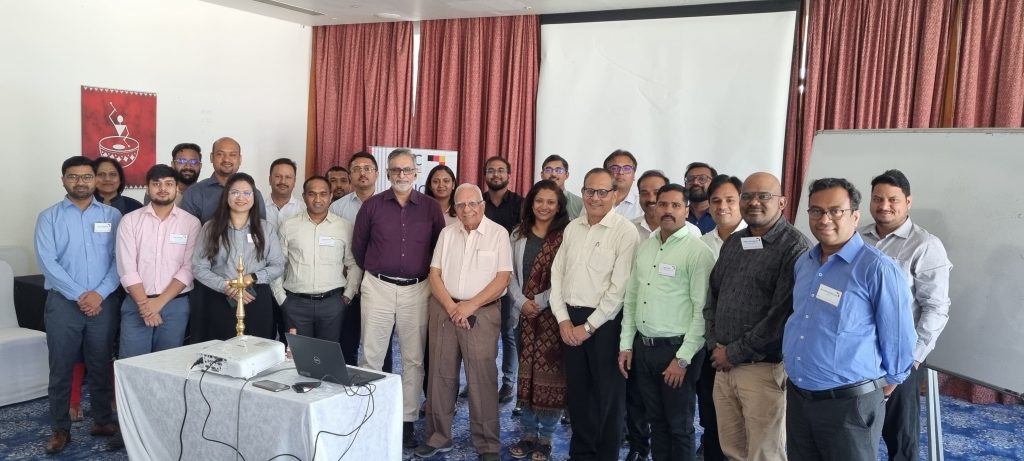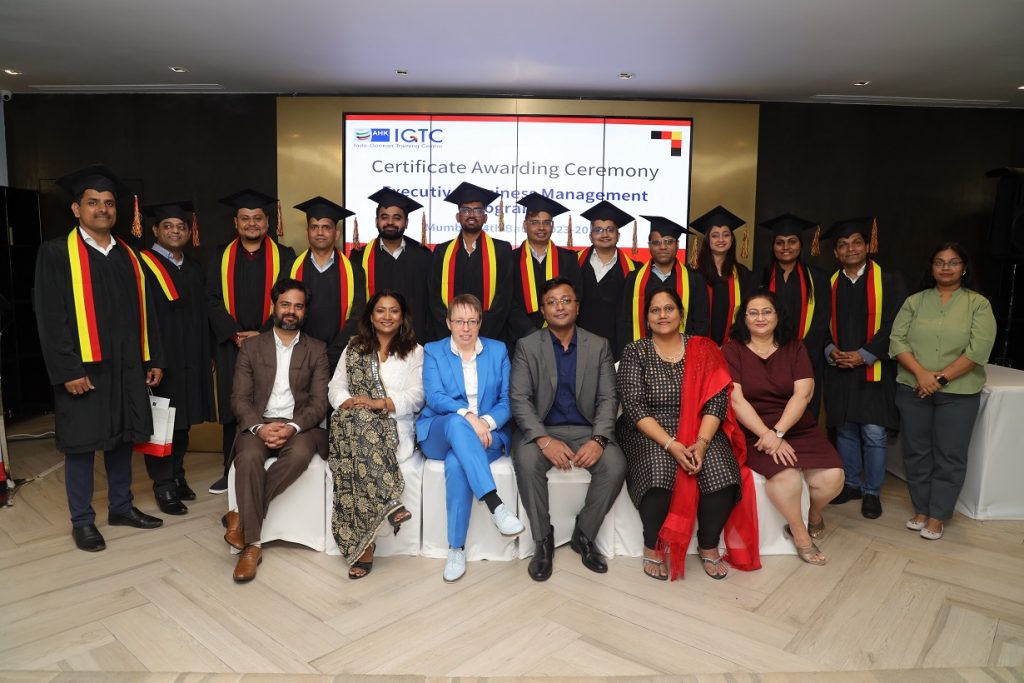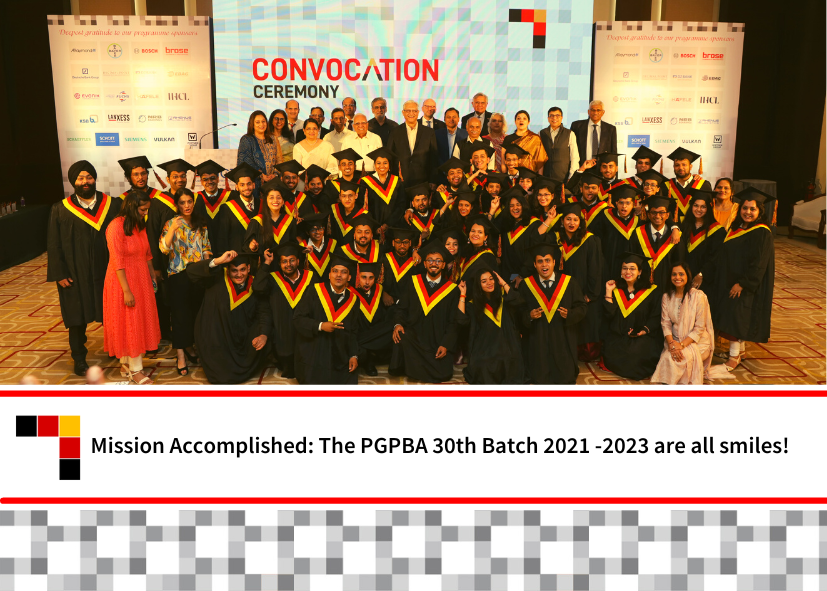“If I had asked people what they wanted, they would have said faster horses.” Henry Ford
Necessity often drives inventions, whereas imagination is the crucible for innovations. Today we are witness to a whole new phenomenon of Electric Horses galloping alongside traditional cars. Soon, these new Electric Horses will be operable as smoothly as the Next Gen Smartphone – intelligence and intuitive.
At IGTC we aspire to be phenomenal in everything we do and achieve. To carry on our spirit of real world learning, our host and Director, Radhieka Mehta invited our Alumni Mr. Magesh Srinivasan of Batch 1998-2000 to present his worldview on the upcoming Connected Car & Future Mobility industry. We had close to 130 participants of IGTC students and the alumni body.
With a unique topic: ‘An Electric Horse Meets a Diesel Dinosaur’, the story of the past, present and the future of mobility, found a curious and engaged audience amongst us. The discussions centered around the theme of ‘The Next Mobile is The Automobile’. This concept enraptured the audience and Magesh enthusiastically explained the basics of a software-defined car and highlighted the key insights for the benefit of the participants.
The In-Vehicle and Closed Loop Architecture: The mechatronic car of yesterday comprised assembled sub-systems represented by the acronym BICEPS: Body, Interior, Chassis, Electronics, Powertrain and Software was added recently to indicate the evolution of software defined vehicle platforms. As explained during the discussions, this new breed of software defined vehicles are evolving to mimic the Smartphone App ecosystem, that can be configured remotely via OTA (over-the-air) updates on in-vehicle embedded intelligence.
Branded Connected Services: Connected Cars, Trucks, Buses, 3-Wheelers, 2-Wheelers are increasing adopting TCUs (telecommunication control units) with built-in GPS modules that enable bi-directional flow of data between the Cloud to the Edge (vehicle). This provides opportunities to create, capture ad deliver value through Connected Service offerings to B2B and B2C use cases across all market verticals. Therefore, differentiation of vehicle OEM brands has shifted from hardware-based feature benefits to connected services-based delivery of unique experiences that enable real time and dynamic customer value. OEMs are transforming their Digital capabilities akin that of Google, Apple, Amazon, Uber, Facebook and Ola.
Business Model Innovation: Future of mobility and its growth is driven by Planet Action and the need to actualize Zero Carbon Footprint in human society. This will usher the need for integrated Multimodal Smart Mobility Solutions to move people and products from point ‘A’ to ‘B’. Furthermore, OEMs are likely to offer ‘product as a service’ to allow adoption of ‘pay per use’ and ‘pay per month’ subscription based service oriented mobility services that will ensure comprehensive fulfillment of mobility needs across B2B and B2C segments of the market. This will involve OEMs creating an ecosystem of collaboration with Insurance, Financial and Banking organizations to deliver a reliable connected experience: 24x7x365.
Q&A Session Highlights:
Dr. Harkant Mankad asked about, the long-term impact of the ‘Diesel Dinosaur’ going extinct. Disruption is Nature’s way to create new from the old, the 130-year auto industry is transforming into a software platform driven Future Mobility organizations said Magesh.
Another question that stood out was the challenge that faced this ‘electric horse’ and what should it be wary of? Unsurprisingly, the answer was the Big 5 tech giants. As Steve Bank mentioned, “It’s worth noting that everything – from the Internet to electric cars, genomic sequencing, mobile apps, and social media – was pioneered by startups, not existing companies.” This monopoly is both threatening and currently sheltering the newer waves of change.
Thus, with its challenges and its work all cut out for it, the automation revolution is set to find its way to the automobile industry. What eases this change? What greases its wheels? How much turbulence can we expect? As we progress further on this journey, we find out more about just how suited this ‘faster’ electric horse is to gallop ahead in the 21st Century.
Article contributions:
Magesh Srinivasan, IGTC Alumni 1998 – 2000
Anjani Miglani, IGTC PGPBA Student Batch 2021 – 2023
Nikhil Anandsekar, IGTC PGPBA Student Batch 2021 – 2023
Follow Magesh on https://www.youtube.com/channel/UCqfKefAlHMt8QdDkm5VgoyQ

